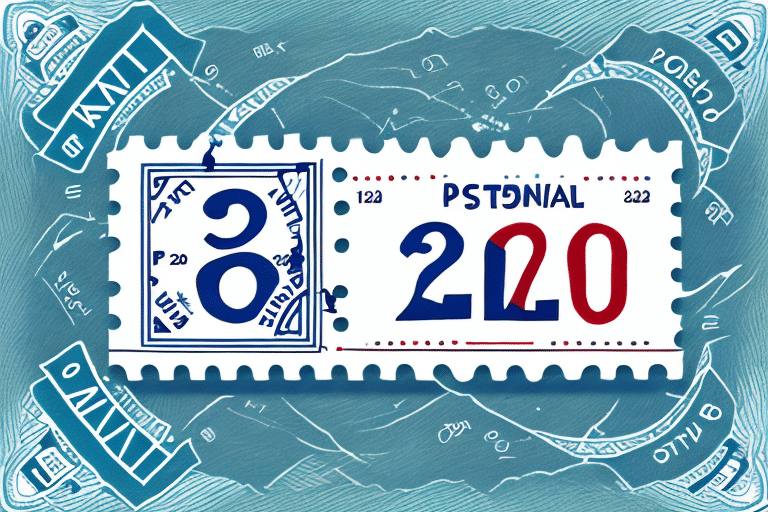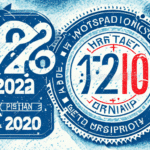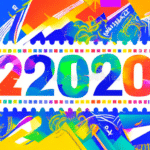When Are Postage Stamps Going Up in 2023?
The cost of postage stamps plays a significant role in the daily operations of the United States Postal Service (USPS). With a potential increase in prices on the horizon in 2023, many customers and businesses are curious about when this change will occur and what factors influence it. In this article, we'll dive into the history of postage stamp prices, how the USPS determines postage rates, and what we can expect in terms of postage stamp price increases for 2023.
The History of Postage Stamp Prices and Changes Over Time
Since the creation of the first postage stamp, the Penny Black, in the United Kingdom in 1840, the cost of postage stamps has undergone several changes. In the United States, the first stamps were introduced in 1847, and the standard postage rate was five cents per half-ounce. Over the years, postage stamp prices have increased due to various economic factors, including inflation, rising labor costs, and transportation costs.
One notable change in postage stamp prices occurred in 1971 when the United States Postal Service introduced the first-class mail rate of 8 cents. This was a significant increase from the previous rate of 6 cents, which had been in place since 1968. The increase was necessary to keep up with the rising costs of delivering mail, including fuel and labor costs. Since then, the price of a first-class stamp has continued to increase, with the most recent increase occurring in 2022, when the price of a stamp rose to 63 cents.
How the Postal Service Determines Postage Rates
The USPS's Board of Governors is responsible for setting postage rates. The board consists of nine members, each appointed by the President with the advice and consent of the Senate. The board assesses the costs associated with the Postal Service's operations and determines the rates necessary to recover those costs. The most significant expense for the USPS is labor costs, with employee compensation accounting for nearly 80 percent of their operating expenses.
In addition to labor costs, the USPS also incurs expenses related to transportation, fuel, and maintenance of their vehicles and equipment. These costs are factored into the determination of postage rates, as they are necessary for the Postal Service to fulfill its mission of delivering mail and packages to every address in the United States.
The Postal Regulatory Commission, an independent agency created by Congress, oversees the Postal Service's pricing decisions to ensure they are fair and reasonable. The commission reviews the USPS's proposed rate changes and can approve, reject, or modify them based on their analysis of the Postal Service's financial situation and the impact of the proposed rates on consumers and businesses.
Factors That Influence Postage Stamp Price Increases
The Postal Service faces various economic challenges that can impact postage stamp prices, such as higher operating costs and declining mail volume. However, the most substantial factor that influences postage stamp prices is inflation. As the cost of living increases, so too does the cost of goods and services, including postage stamps.
Another factor that can influence postage stamp prices is changes in government regulations. The Postal Service is subject to regulations that can impact its operations and finances. For example, if the government mandates that the Postal Service must use more expensive environmentally-friendly materials for its stamps, this could lead to an increase in stamp prices.
Additionally, technological advancements can also impact postage stamp prices. As more people switch to electronic communication, the volume of mail decreases, which can lead to higher postage stamp prices to make up for the loss in revenue. On the other hand, if the Postal Service invests in new technology that improves efficiency and reduces costs, this could lead to lower postage stamp prices.
The Impact of Inflation on Postage Stamp Prices
Inflation affects the price of postage stamps in two main ways. The first is that the cost of producing and distributing mail increases. As the value of the dollar decreases, the cost of materials and labor goes up. The second way inflation impacts postage rates is through the USPS's cost-of-living adjustments to employee compensation. The more inflation rises, the more the Postal Service must pay their employees.
Furthermore, inflation can also affect the demand for postage stamps. As the cost of living increases, people may have less disposable income to spend on non-essential items like sending mail. This decrease in demand can lead to a decrease in the price of postage stamps as the USPS tries to maintain their customer base. However, if the decrease in demand is significant enough, the Postal Service may need to increase the price of stamps to make up for the loss in revenue.
Predictions for Postage Stamp Price Increases in 2023
While nothing is set in stone, many experts predict that postage stamp prices may continue to rise in 2023. The USPS announced that they had submitted a proposal for a rate increase to the Postal Regulatory Commission in October 2022, which led to the July 2022 increase to 63 cents for First-Class Mail. However, future increases in 2023 will depend on various factors, including economic conditions and operational costs.
Another factor that could impact postage stamp prices in 2023 is the ongoing decline in mail volume. With more people relying on electronic communication and online bill payments, the Postal Service has seen a decrease in revenue from traditional mail services. This could lead to a need for higher prices to make up for the loss in revenue.
How Postage Stamp Price Increases Affect the Postal Service and Its Customers
The effects of postage stamp price increases on the Postal Service and its customers are significant. A rate increase can generate additional revenue for the Postal Service, which can help cover operational costs. However, it can also lead to decreased mail volume as customers seek more cost-effective alternatives to traditional mail services, such as email and electronic bill pay.
Another effect of postage stamp price increases is that it can lead to a decrease in the use of direct mail advertising. Businesses may opt for digital marketing strategies instead of sending physical mail to customers, which can further reduce the Postal Service's revenue. Additionally, price increases can disproportionately affect low-income individuals and small businesses who rely on traditional mail services for communication and marketing.
On the other hand, some argue that postage stamp price increases are necessary to keep up with inflation and the rising costs of operating the Postal Service. Without rate increases, the Postal Service may struggle to maintain its services and infrastructure. Furthermore, some customers may be willing to pay higher prices for the convenience and reliability of traditional mail services.
Tips for Saving Money on Postage Stamps Despite Price Increases
- Buy in Bulk: For personal use, consider buying stamps in bulk, as they often come at a discount.
- Explore Alternative Mail Services: Businesses can explore alternative mail services such as presorted standard mail or periodicals to save on postage costs.
- Use Online Postage Services: Many online postage providers offer discounted rates compared to traditional post offices. You can also print your own postage labels from home, saving time and money on trips to the post office.
- Adopt Electronic Communication Methods: Consider using electronic communication methods instead of traditional mail. Email, messaging apps, and social media platforms are great alternatives to sending physical mail. Not only are they often faster and more convenient, but they're also free!
Alternatives to Traditional Postage Stamps: Electronic and Online Options
With the advent of technology, an increasing number of individuals and businesses are exploring alternatives to traditional mail services. Electronic and online options, such as email and online bill pay, can be faster, more cost-effective, and more environmentally friendly than traditional mail services. As technology continues to advance, these options will likely become even more prevalent.
However, it is important to note that electronic and online options may not be suitable for all types of mail. For example, legal documents or sensitive information may require physical delivery to ensure security and confidentiality. Additionally, some individuals may prefer the personal touch of a handwritten letter or card, which cannot be replicated through electronic means. Therefore, while electronic and online options offer many benefits, it is important to consider the specific needs and preferences of each situation before deciding on a mail service.
The Debate Over Privatizing the Postal Service and Its Effect on Postage Stamp Prices
There has been an ongoing debate for years over whether to privatize the Postal Service. Opponents argue that privatization could lead to significant changes in the Postal Service's operations, including potential layoffs and service reductions. Supporters argue that privatization could lead to more efficient operations and improved financial stability. However, the effect of privatization on postage stamp prices remains unclear.
One potential concern with privatization is that it could lead to a lack of universal service. Currently, the Postal Service is required to provide mail delivery to every address in the United States, regardless of location or profitability. If the Postal Service were to become privatized, there may be less incentive for private companies to provide service to remote or less profitable areas.
Another factor to consider is the impact of technology on the Postal Service. With the rise of email and electronic communication, the demand for traditional mail delivery has decreased. This has led to financial struggles for the Postal Service, which may be exacerbated by privatization. However, some argue that privatization could lead to innovative solutions and new revenue streams, such as expanded package delivery services.
Conclusion
In conclusion, while the exact date for postage stamp price increases in 2023 remains unknown, it's safe to assume that prices may continue to rise. Factors that influence postage stamp price increases include inflation, higher operating costs, and declining mail volume. Despite potential increases, there are still ways to save money, such as buying stamps in bulk or exploring alternative mail services, and electronic and online options will become more prevalent over time.
It's important to note that postage stamp price increases not only affect individuals sending personal mail, but also businesses that rely heavily on mail services. Small businesses, in particular, may struggle to absorb the cost of increased postage prices, which could impact their bottom line. As a result, it's important for businesses to plan ahead and budget accordingly for potential price increases.
Additionally, while electronic and online options may become more prevalent, there are still certain situations where physical mail is necessary. For example, legal documents often require physical signatures and must be sent through the mail. Therefore, it's important to consider the potential cost of postage stamp price increases when budgeting for these types of necessary mailings.




















